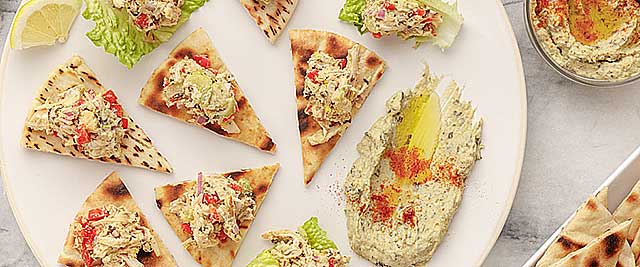Only the Best for Baby
Choose from these eight organic flavors:
- Spinach & Sweet Potato
- Sweet Potato
- Tropical Mango
- Pear
- Carrots
- Applesauce
- Apple Mango
- Apple Banana
Cedar’s
Hommus Chicken Salad
How do you up the ante with your chicken salad? Simply swap out mayo for hommus! Doing so will pack even more protein and nutrients into your sandwiches and give them a burst of flavor no one will expect.- 3 cups Chicken, cooked and shredded
- 1/4 cup Onion, minced (about 1/4 medium onion)
- 1/2 cup Bell pepper, diced (about 1/2 bell pepper)
- 1/2 cup Celery, diced (about 2 stalks)
- 1 10-oz Cedar’s Artichoke Spinach Hommus
- 1/2 tsp. Salt
- 1/2 tsp. Paprika
- 1/4 tsp. Cayenne pepper
Directions:
- Transfer Cedar’s Hommus to a bowl and stir in shredded chicken and onion.
- Stir until completely combined. Add in diced bell pepper and celery.
- Taste and season with salt, paprika and/or cayenne pepper as needed.
Visit Cedar’s website to learn more about Know Better Hommus and explore Cedar’s full product offering. You can also follow them on Cedar’s Facebook, Cedar’s Instagram, Cedar’s Pinterest and Cedar’s YouTube.
Superfoods for a Super New Year

Cauliflower
This cruciferous vegetable has grown in popularity over the past few years. It’s packed with cancer-fighting compounds and is an excellent source of vitamin C. Enjoy cauliflower raw, simply roasted, in a stir-fry or puréed into soup. Jump on the “cauliflower rice” trend with ease by picking up a package of Sprouts Cauliflower Crumbles in the produce section next time you shop.
Chicories
Haven’t heard of this one? Chicories are those bitter winter greens like endive and escarole or purple radicchio. They are a good source of vitamin C and may also help boost heart health. Use endive to scoop and serve a bread-free tuna or chickpea salad. Grill or sauté radicchio for a warm winter salad or toss it into vegetable soup.
Pomegranates
Pomegranates are one of the few foods that aren’t always easy to find. That’s not the case in the winter. They thrive in cooler temperatures from October to January. Pomegranates are known for their antioxidants. A beautiful, sweet-tart addition to greens, smoothies and winter fruit salads, pomegranates are an excellent source of fiber and vitamins C and K.
Winter Squash
Though pumpkin gets all of the attention in the fall, it’s not the only gourd in the patch. Roast or purée an acorn, delicata, kabocha or butternut squash for some variety. Enjoy the different winter squashes prepared sweet, savory, curried or spicy. With a deep orange to yellow flesh, winter squash is bursting with vitamin A (as beta-carotene), vitamin C, potassium and fiber. Bonus: Roast or dry the seeds and enjoy a protein- and magnesium-rich snack or salad topper.
Matcha
Though matcha is available anytime you want it, this green gold is a warm and comforting answer to cold temperatures. Regular green tea is a popular healthy brew. Matcha (a green tea powder) takes it to another level. Because you drink or eat the entire leaf, you get more. Chock full of polyphenols, matcha is lauded for its anti-aging properties. Importantly, it may help lower the risk of certain cancers and heart disease. Also, if you’re trying to stay focused on your goals this year, sip on this. Matcha is known to boost mental alertness too without the jitters you might get from other caffeinated drinks. This list is not at all comprehensive. It’s just a sampling of the many superfoods available at this time of year. Put one or all in the rotation for a super new year.About Marisa Moore
Helping People Eat Better One Morsel at a Time
Marisa Moore is a registered dietitian/nutritionist and owner of Marisa Moore Nutrition. Using a food first, mostly plant-based approach, Marisa helps people eat better one morsel at a time through group classes, writing and developing healthy recipes. She enjoys working as a consultant for small and large businesses including food and nutrition startups and being an ambassador for delicious food and a healthy lifestyle. A past spokesperson for the Academy of Nutrition & Dietetics, Marisa is a trusted food and nutrition expert and has appeared in most major media outlets including the Today Show, New York Times, Wall Street Journal, Washington Post and has had regular appearances on CNN. Marisa is a contributing editor for Food & Nutrition Magazine and U.S. News & World Report blogger. Before launching her consultancy, Marisa worked as an outpatient dietitian, the corporate nutritionist for a national bakery café restaurant and she managed the employee worksite nutrition program at the U.S. Centers for Disease Control and Prevention (CDC). Always ready for new passport stamps, Marisa loves to explore new countries but in her spare time you might find her cooking, dancing salsa or on a walk with her dog Biscuit. Learn more at marisamoore.com.Wine Pairings
 Want to know what wine would pair nicely with food and nosh for your next special occasion? Check out some of these pairing tips.
Want to know what wine would pair nicely with food and nosh for your next special occasion? Check out some of these pairing tips.
White Wines
Chardonnay (Shar-dun-NAY)
Dry. Medium-heavy body. Typically with oak (creamy, buttery, toast) and subtle flavors with aromas of apple, citrus, apricot and tropical fruit. Pairs well with: Mild Cheese, Salmon, Scallops, Chicken, Baked Ham, CheesecakeSauvignon Blanc (So-veen-YOHN-Blahnk)
Dry. Light-medium body. Clean and refreshing with crisp flavors of grapefruit, lemon, passion fruit and melon. Pairs well with: Oysters, Shrimp, Lobster, Chicken, Key Lime PiePinot Grigio (Pea-no-GREE-gee-oh)
Medium body. Crispy and dry with fruit forward flavors of citrus, green apple and floral notes. Pairs well with: White Sauces, Grilled Chicken, Lobster, Shrimp, Pork, Apple TartRiesling (REESE-ling)
Sweet. Light body. Traditionally sweet (off-dry) with flavors of stone fruit, melon, apple, citrus and notes of minerality. Pairs well with: Creamy Cheeses, Spicy Dishes, Baked Ham, Grilled Pork, MelonMoscato (MOS-cahtoh)
Sweet. Light body. Sweet flavors of apricot, peach and honeysuckle. Pairs well with: Oysters, Shrimp, Spicy Dishes, Peach Cobbler, SorbetSparkling
Light and bubbly. Pairs well with: Nutty Cheeses, Oysters, Clams, Crab, Spicy Food, Milk ChocolateRed Wines
Cabernet Sauvignon (ka-behr-NAY soh-vee-YOHN)
Dry. Heavy body. Rich flavors of blackberry, plum, black cherry and notes of earthiness. Pairs well with: Pungent Cheeses, Grilled Steak, Roasted Lamb, Red Sauces, Dark and Bittersweet Chocolate.Malbec (mahl-BECK)
Dry. Heavy body. Luscious cherry, black raspberry and plum notes. Pairs well with: Smoked Turkey, Carne Asada, Pulled Pork, Dark and Bittersweet ChocolateZinfandel (ZIN-fan-dell)
Dry. Medium–heavy body. Spicy flavors of ripe berries, pepper and jammy fruit. Pairs well with: Aged Cheeses, Spare Ribs, Brisket, Leg of Lamb, Pizza, Chili, Beef Stew, Chocolate CakeMerlot (mer-LOW)
Dry. Medium body. Lush and velvety with flavors of red berries and chocolate. Pairs well with: Aged Cheeses, Veal, Meatloaf, Hamburgers, Salmon, Red Sauces, Chocolate MoussePinot Noir (PEA-no-Nwar)
Dry. Medium body. Fruity at the core with flavors of strawberry, cherry and plums. Pairs well with: Creamy Cheeses, Roasted Pork, Smoked Sausage, Salmon, Crème BrûléeRed Blend
Off-dry. Medium body. Can be different styles but usually have flavors of jam, blackberry and plum. Pairs well with: Risotto, Lamb Chops, Grilled Steak, Hamburgers, Cherry PieWine and Cheese Pairings
1. Smoked Gouda and 7 Deadly Zins
This full-bodied Zinfandel pairs well with sharp and smoky Gouda. Gouda’s mix of salty and sweet, along with its deep nutty character, stands up well to the zin’s bold flavors.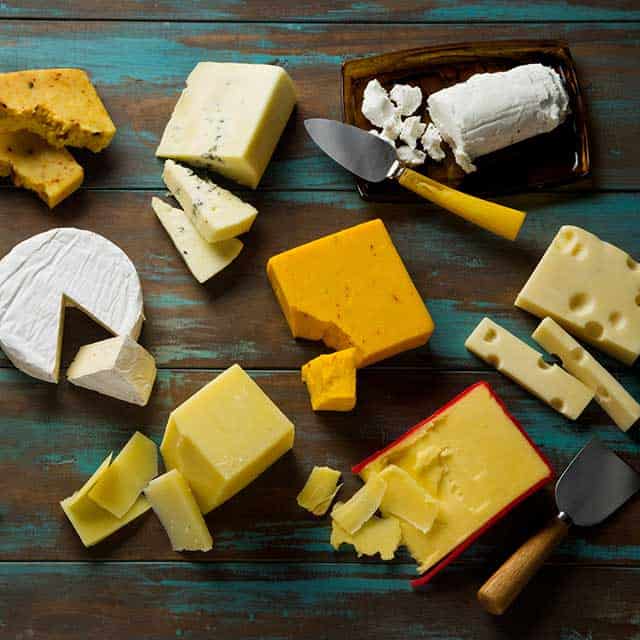
2. Chipotle Cheddar and Jaume Serra Cristalino Brut Cava
This fine Spanish sparkling wine has citrus and apple flavors with a clean, crisp finish. It’s a great celebratory wine that tames a zesty cheddar cheese.3. Monteforte Blue Wedge and Montes Classic Cabernet Sauvignon
This creamy, crumbly cheese pairs well with a medium-bodied red blend. The friendliness of the tannins, combined with its spice and acidity, makes the Montes Classic Cabernet Sauvignon the best choice.4. Jalapeño Cheddar and Apothic Red Blend or La Crema Chardonnay
“Everything is betta with chedda,” as the saying goes. This flavor-packed cheese pairs especially well with Apothic Red’s captivating blend of Syrah, Cabernet Sauvignon and Merlot.5. Carpa Goat Cheese Log and Starborough Sauvignon Blanc
Sauvignon Blanc is the wine most often chosen to accompany goat cheese. Why? Because the zippy acidity in the wine matches the tanginess of the cheese. The combination of the two is fresh and invigorating.6. President Swiss Emmental and La Marca Prosecco
Refreshing effervescence and lively fruit flavors give La Marca Prosecco a cheese-friendly profile. The Italian sparkling wine pairs well with a semi-hard, cow’s milk cheese such as Swiss.7. Screaming Dutchman Red Wax Gouda and Chateau Ste. Michelle Riesling
Riesling is a semi-sweet wine with peach and citrus undertones. Its lightness complements mild Gouda, which is creamy and easy on the palate.8. Parmesan Reggianito and Bodega Norton Malbec Reserve
Bodega Norton Malbec Reserve characteristic spice and explosive fruit flavors hold their own when paired with Parmesan’s salty personality.9. Pe’re Brie and Gnarly Head Pinot Noir
In general, softer cheeses go best with light-medium red wines, as the lighter flavors are more in tune with the subdued textures and buttery flavors. Pinot Noir’s robust flavors complement Brie’s buttery texture and mellow flavor. Wine is not available in Colorado, Oklahoma or Utah. Items may vary by location.Who Ensures Our Produce Is Up to Par?
At 8am, the Sprouts produce warehouse in Colton, California, is buzzing. Then again, that’s when we arrived for a tour. It had actually been buzzing since about 4am.
Warehouse staff push forklifts into 18-wheelers weighed down with pallets of fruits and veggies, then pull back to put the produce into their proper storage rooms. Quality Control Clerks move from cooler to cooler inspecting each shipment for freshness, color, size, shape and taste. As they weave through the maze, they dodge a forklift shuffling 800-pound bins of watermelons and a new shipment of mangoes that didn’t make the cut. The mid-morning frenzy assures Sprouts customers will be getting the best produce in town.
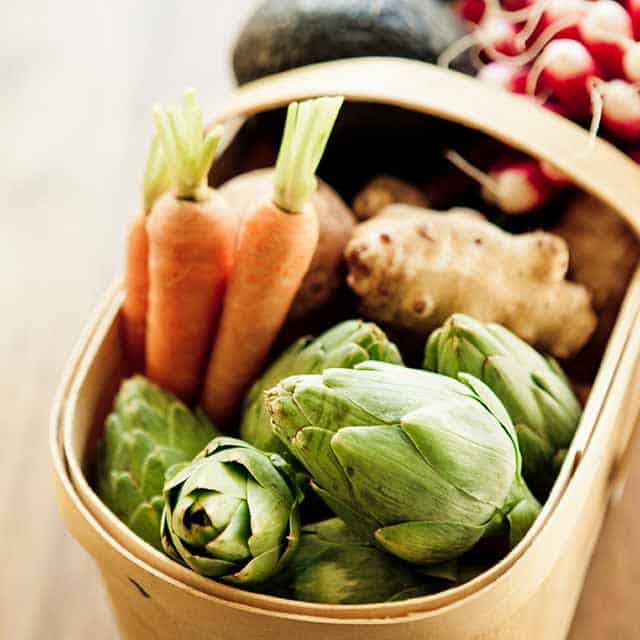
It’s a side of the food industry consumers rarely see. They shop at the Sprouts Produce Department with the expectation of “farm-fresh” produce, but they seldom know where the food they buy comes from. They have a vague idea of farms in California. However, they know little about how food gets from field to plate, and the complex logistics on which the system depends.
When fresh products arrive at the warehouse, they are inspected before they enter a world of organized mayhem—filled with the honking and humming of forklifts whirling back and forth, collecting the items. Filling an order is much more than matching the items on a pallet to words on an order form.
For instance, to the untrained eye a shipment of 17,000 oval mangoes appears the same shade of half-green half-red so common to fruit just off the vine. But under the critical eye of Sprouts’ Quality Control Team, those same mangoes have pinhead-size black spotting caused by hot water treatment.
“Do they taste great? Sure,” says Sprouts’ Assistant Quality Control Manager Jeff Provost. “But customers buy produce with their eyes. It has to be aesthetically proper. It has to have curb appeal.”
Back on the truck they go. An entire load has been rejected and will be sold to some other retailer that isn’t quite so particular.
The clerks are also checking to make sure the quantity and size of the product match up with what was ordered. They uphold a strict process for traceability, which means the product’s weight, country of origin, freshness, and condition are recorded and entered into the database. Each pallet is then given a “license plate number” sticker, thus enabling the end-user to look up the origin and history of the product in a database.
The pace is fast, as the warehouse staff processes about 50–60 truckloads and moves about 1,000 pallets a day. If the product is accepted, the truck drivers get to hop back in their empty trucks and head home. If it doesn’t make the cut, the drivers pull away with heavily laden trucks and have to find someone else to buy their produce.
“I don’t want to sell anything to one of our customers that I would not serve to my own family,” says Provost.
Provost is second in charge at the Castle & Cooke Cold Storage Distribution Center, the gigantic third-party facility that helps Sprouts operate its supply chains more efficiently.
From Farm to Fork
Sprouts’ quest for the best combination of quality and value begins long before the produce arrives in the warehouse. Our team of experienced buyers seeks out premium products from trusted growers. With storage and distribution centers in Arizona, California and Texas, Sprouts is then able to bring that level of quality home to customers in quantities that guarantee the most competitive prices.
With about 80 years of combined experience in the produce industry, the four-member California Sprouts Quality Control Team knows the life cycles of produce and understands the critical nature of temperature in that process.
From the time a piece of fruit or a vegetable is harvested, a biological clock begins. It’s a clock that can be manipulated, and even slowed to a crawl, but only if the proper storage principles are maintained.
All produce has a ripening timetable that continues after it is disconnected from its nutritional lifeline. Most are picked so the ripening timing will coincide with the arrival at the shopper’s home. Others, like tomatoes on the vine, will continue ripening.
Did you know?
When picking tomatoes on the vine, look for the yellow glow on the fuzzy stem—that means they’re fresh. If you rub the stem with your fingers, you’ll feel the sap and smell a very potent aroma. The vine gives the fruit good flavor and nourishment, so keep tomatoes on your kitchen counter until they are naturally falling off the stem. At that point, you’ll know they’ve gotten all of the flavor and nutrients possible.
Climate control is critical because improper temperatures can shorten the shelf life of fruits and vegetables by days.
Visit the warehouse any time and you’ll see employees in winter overalls, beanies and fingerless gloves. Inside the warehouse, the temperatures are carefully maintained to slow the ripening process and curb (natural) ethylene gas production rates that lead to quick deterioration.
The grapes, lettuce and avocados are stored in a 34°F room with wet floors and high-humidity fans. The hearty vegetables and tropical fruits (i.e. potatoes, onions, coconuts, pineapples and mangoes) are kept in a 55°F cooler. Produce such as berries, cherries and cantaloupes lay in a 34°F room without humidity. Too much cold can be just as damaging as not enough, so tolerances are tight and constantly monitored to maintain the optimum temperature.
“We also have a daily quality check, at which point the staff creates an ‘ideal pick path.’ That means someone goes through and makes sure items nearing expiration dates are picked first,” says Quality Control Manager Neil Cullen. “They also ensure organic produce is separated from the non-organic produce to maintain the integrity, as mandated by the National Organic Program.”
“It sounds like a simple concept, but there’s organization and thoroughness involved.”
Any produce that does not pass the daily quality check, but is still fit for human consumption, gets set aside for charity. Sprouts partners with Second Harvest Food Bank, an agency that feeds 400,000 people a week in the Los Angeles area, according to Cullen. Second Harvest picks up excess or damaged fresh produce that would otherwise go to waste and distributes it to those in need. Whether it’s the fruit that is cut in half for quality checks, or a box of produce that has a few too many bumps and bruises, it’s perfectly edible, just not sellable. The organization also collects produce scraps for livestock. Sprouts receives tax benefits for its donations, but the warm, fuzzy feeling that comes from doing the right thing is far more valuable.
Monitoring Quality
To evaluate fruit, the Quality Control Managers use five very valuable tools: Their senses. They look for bruising, listen for hollow sounds, feel for firmness, smell for sweetness and taste for deliciousness.
But when they need a sixth sense to tell how sweet a piece of fruit really is, they use a refractometer. A refractometer measures the brix (or percentage of soluble solids, or sugar) of the fruit, primarily citrus, apples, grapes, melons, stone fruits and strawberries. To measure the brix, our Quality Control gurus will cut a piece of fruit and then squeeze some juice from the fruit onto the open refractometer. They will then close it, and look into the eyepiece (kind of like a kaleidoscope) to see what degree of sugar is measured.
When they want an exact measurement to tell how firm or ripe a piece of fruit really is, they use a penetrometer. To use this tool, they scrape off a small piece of skin on each side of the fruit to expose the flesh. Then, they puncture the fruit and take the reading. Though the USDA has not yet created pressure requirements for every item, there is a chart that dictates acceptable readings for harvest, shipment and consumption.
We Don’t Dictate What You Eat
Walking through the produce warehouse is an eye-opening—and sinus-opening—experience. The vibrant red, green, and orange hues pop out from the large stacks of boxes. The smells of aromatic ginger root, basil and Meyer lemons intrigue your inner foodie.
The wide assortment, however, is what truly sets Sprouts apart. “We don’t dictate what people should eat and what offerings they can have,” Cullen says.
A more gourmet shopper can find specialty items such as elephant garlic, which bakes nicely and turns to butter. At the same time, a run-of-the-mill shopper can stock up on old-school boiler onions, which are anything but gourmet. Same thing goes for potatoes: Sprouts sells “why-fix-what-ain’t-broke” red potatoes alongside time-honored white potatoes and new-fangled purple potatoes (which live up to their regal color nutritionally too).
In the case of tomatoes, Sprouts carries 12–15 varieties, from slicing tomatoes to heirloom tomatoes to Campari tomatoes to baby super sweet tomatoes. The Cherub tomatoes are one of the highest volume products in our stores. “We negotiate better pricing than a lot of our competitors, and pass that saving onto the shopper,” Cullen says.
The Best the World Has to Offer
The premise of our business is, and has always been, value to the customer. Our Produce Buyers source the best-quality produce at the best price available, whether it is conventional or organic, domestic or international.
Our “farmers market” reputation comes from our long-term relationships with local growers and vendors, coupled with our ability to sell fresh produce at great prices. Thanks to our international partners, fruits and veggies that were once strictly seasonal are now available year-round.
For example, early in the spring, Sprouts opts for imported grapes. “Domestic grapes at that time of year would taste like battery acid,” Cullen jokes. “But now, well into the summer, the California grapes are at their peak.”
Buying from international vendors also means we can bring in unique items such as Brazilian-grown strawberry papayas and Chilean kiwifruit in the summer.
In today’s marketplace, food safety verification and confidence are critical, especially for those imported items. Shoppers can look for Primus Labs third-party certification clearly labeled on imported produce cartons, which guarantee the highest standards of quality and sanitation.
“Our shoppers know that any imported produce with Primus Labs certification comes from a state-of-the-art facility that exceeds the sanitary standards of most domestic facilities,” Cullen says. “Hair nets, shoe booties, lab coats, and even foot baths are required to ensure a germ-free facility.”
We go to great lengths to guarantee that the quality is there every step of the way, even when we’re sourcing our products from around the corner or around the globe. We are proud of the processes, safeguards and quality-control protocols we have in place.
Top 24: Superfood Foods at Sprouts
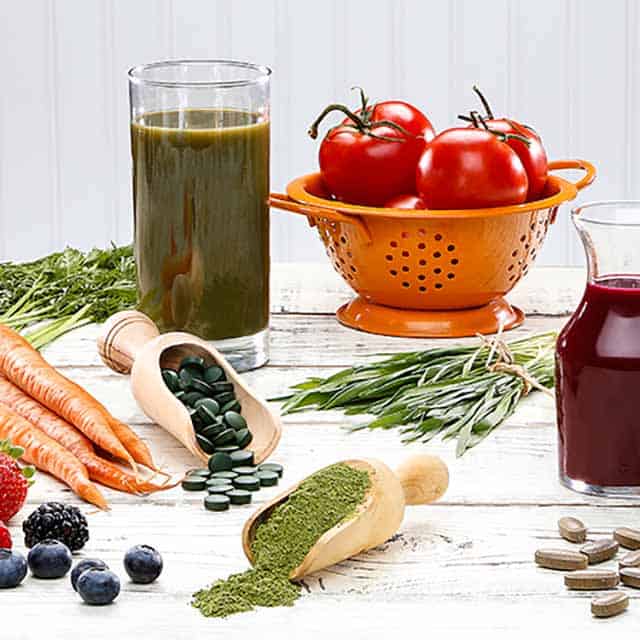 Besides tasting fantastic, superfoods provide more energy and protection against disease than other foods. Discover the delicious difference when you enjoy powerful foods that are packed with nutrients to fight off disease, boost your energy and keep you healthy. Here are two dozen of our favorites.
Besides tasting fantastic, superfoods provide more energy and protection against disease than other foods. Discover the delicious difference when you enjoy powerful foods that are packed with nutrients to fight off disease, boost your energy and keep you healthy. Here are two dozen of our favorites.
Apples:
Each crisp, juicy apple provides five grams of fiber and an abundance of antioxidants, which may support cardiovascular health. Enjoy baked with cinnamon and granola or sliced into wedges.Berries:
Deliciously tangy and sweet, acai, blueberries, cranberries, blackberries, raspberries and strawberries contain antioxidant compounds called anthocyanin that reduce free-radicals in the body, which may help to slow the aging process.Cinnamon:
A USDA study shows that consuming a half teaspoon of cinnamon per day may significantly lower blood sugar in people with type 2 diabetes, as well as reduce triglyceride, LDL cholesterol, and total cholesterol levels.Citrus:
Citrus fruits, such as oranges, grapefruits and tangerines, contain flavonoids that are unique to the citrus family. The naringin produced in grapefruits and hesperidin found in oranges are both powerful antioxidants. Sweet, juicy and versatile, citrus fruits are high in vitamin C, folic acid and potassium.Cruciferous Vegetables:
Broccoli, kale, cabbage and Brussels sprouts are cruciferous vegetables that not only taste great steamed and sautéed, but they are also a good source of dietary fiber and complex carbohydrates. Some studies show that low-fat diets rich in fruits and vegetables may reduce the risk of some types of cancer.Eggs:
Simply folded into an omelet or whipped into a grand soufflé, eggs (especially egg whites) provide an inexpensive source of high-quality protein. Eggs are not only low in carbohydrates and sodium, but they also contain lutein and zeaxanthin, antioxidants that support eye health.Green Foods:
Wheat grass, spirulina, chlorella and barley grass are concentrated, powerful supplements rich in protein and are bursting with carotenoids, chlorophyll, vitamins, minerals and essential fatty acids.Green Leafy Vegetables:
Spinach, kale, Swiss chard and romaine lettuce each contain beta-carotene, lutein and zeaxanthin that work together to support overall health. As good sources of vitamin B and minerals—adding a wide variety of these leafy greens to your plate, every day, ensures that you will reap their health benefits.Herbs and Spices:
Studies show that common herbs and spices, such as sage and rosemary, are rich in antioxidants and may support a healthy digestive and nervous system. About a teaspoon per day added to your favorite recipes is all it takes!Honey:
The buzz about honey is true! Full of B-complex vitamins, amino acids and enzymes, raw honey is tasty and a great substitute for refined sugars. Enjoy swirled into tea or drizzled over oatmeal.Kiwifruit:
One petite kiwifruit packs as much vitamin C as an orange. It is important to replenish Vitamin C each day because we are unable to create this essential vitamin in our bodies. Enjoy kiwifruit in smoothies and fruit salads.Legumes:
Beans and lentils, members of the legume family, are an excellent source of hearty, low-fat plant protein. Simmered in soups or blended into spreads, legumes are a versatile and delicious introduction to superfoods. Soluble fiber from beans and lentils, as part of a diet low in saturated fat and cholesterol, may reduce the risk of heart disease. A serving of legumes provides at least four grams of soluble fiber.Nuts and Seeds:
Roasted, toasted or raw, nuts and seeds are a delicious source of protein and fiber. They pack a nutritious punch with heart-healthy monosaturated oils, vitamins and minerals. The lignans in seeds have been demonstrated to reduce cholesterol levels. Scientific evidence suggests, but does not prove, that eating one and a half ounces per day of most nuts, as part of a diet low in saturated fat and cholesterol, may reduce the risk of heart disease.Oats:
Stick-to-your-ribs nutrition! Simmered into hot cereal, oats provide a good source of complex carbohydrates. Soluble fiber from foods, such as oats, as part of a diet low in saturated fat and cholesterol, may reduce the risk of heart disease. A half-cup serving of oats supplies about nine grams of fiber.Olives and Olive Oil:
Rich and fruity, olive oil stands out as a culinary staple in Mediterranean cultures. A good source of monounsaturated fat, adding two tablespoons of olive oil per day to your diet may support cardiovascular health.Omega-3 Fish:
Coldwater fish such as wild salmon, tuna and trout contain beneficial omega-3 fatty acids. Supportive, but not conclusive research shows that consumption of EPA and DHA omega-3 fatty acids may reduce the risk of coronary heart disease. While amounts may vary by species, origin and season, one serving of omega fish provides at least 0.5 grams of EPA and DHA omega-3 fatty acids.Orange Veggies:
Vibrant orange vegetables, such as pumpkins, butternut squash, sweet potatoes and carrots contain high levels of beta-carotene. A beneficial nutrient found in fruits and vegetables, beta-carotene is converted into vitamin A, giving the body an antioxidant boost. Cooking vegetables also makes the nutrients easier to absorb. Enjoy roasted acorn squash or lightly steamed carrots.Pomegranates:
Rich in powerful, free-radical fighting antioxidants called polyphenols, an eight-ounce serving of pomegranate juice enjoyed daily may support normal levels of cholesterol and healthy coronary artery function.Soy:
Soy’s superstar status stems from its culinary adaptability and health properties. According to the FDA, adding 25 grams of soy protein each day, to a diet low in saturated fat and cholesterol, may reduce the risk of heart disease. Versatile and delicious, enjoy soy in its many forms including tofu, tempeh, miso, edamame and soymilk.Tea:
Sip your way to good health with a calming cup of tea. True teas, whether they are green, white, black or oolong, originate from the Camellia sinenis plant. Processing techniques differentiate each type of tea. With beneficial levels of flavonoids and only two calories per cup, drinking tea is a great way to support overall health.Tomatoes:
Naturally delicious and full of nutrients, tomatoes contain an abundance of lycopene, a health-promoting plant pigment. Lycopene not only gives tomatoes their ruby red color, but it also helps support immune function and prostate health. Cooked tomatoes found in pasta sauce, salsa and tomato paste enhance the absorption of lycopene into your system.Turkey:
A lean, mean energy machine! Versatile and low-fat, turkey breast is an excellent protein choice. Juicy, delicious and rich in zinc, turkey is best enjoyed in soups, salads and sandwiches.Whole Grains:
Rich in complex carbohydrates, whole grains add beneficial phytonutrients, fiber, vitamins and minerals to your diet. Packed with nutrition, the germ or “heart” of the kernel adds essential B-vitamins, iron and zinc to your plate. Diets rich in whole-grain, plant-based foods may reduce the risk of heart disease and some cancers.Yogurt and Kefir:
Creamy and cool, cultured dairy products, such as yogurt, kefir and buttermilk, contain probiotics. Also known as “friendly bacteria,” probiotics support the intestinal tract and the immune system. Maintain the overall health of your immune system by enjoying a cup of fruit yogurt, savoring a tangy raspberry kefir or stirring buttermilk into roasted garlic mashed potatoes.New Year Resolutions You Can Keep
Eat a variety of colorful foods
If your plate’s looking pale, that means you’re probably not getting a lot of nutrition from your food. One surefire way to make sure you’re eating right is by keeping it colorful. Brightly colored foods such as carrots, beets and spinach are nutrient-rich and packed with powerful antioxidants. Challenge yourself to pile on the purple, red, green and orange fruits and veggies.Swap your sweets
Packaged, processed and high-fructose corn syrup treats gratify for seconds, but leave us feeling sluggish and bloated. This year, swap one of your go-to packaged snacks for the natural sugars of fresh and dried fruits. Fresh fruits like apples and bananas are fiber- and vitamin-rich, and dried fruits like apricots and cherries are great for snacking on the go.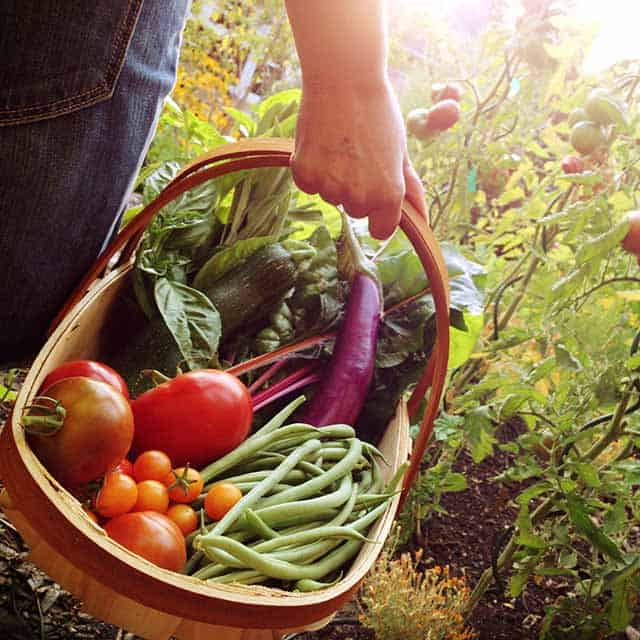
Eat what’s in season
When produce is in season, the relative abundance of the crop usually makes it less expensive at Sprouts. It’s the basic law of supply and demand, and when crops are in season you’ll be rewarded financially by purchasing what’s growing now.Buy your grains and pasta in bulk
Buying in bulk helps you save money, reduce waste and stay stocked up for a home-cooked meal. Bulk up on a few staple dry goods items such as beans, rice and pasta. But make sure you’re purchasing items you’ll definitely eat—a deal isn’t a deal, after all, if you end up throwing most of it away.Cook at home at least three nights a week
Eating and cooking at home saves money and keeps you in control of what you’re putting in your mouth. And it doesn’t have to be time-consuming. By planning ahead, you can stretch one big dish into several days’ worth of meals. Not sure what to make? Check out our archive of recipes for more ideas.Start a vegetable garden
Growing your own food is a great way to get hands-on with your health goals. Tomatoes are chock-full of antioxidant-rich lycopene and vitamin C. Plus, they taste great and can be used in everything from sauces to salads and sandwiches. Not a tomato fan? Our starter kits make crisp carrots or sweet peas that are easy to grow.Swap a harsh cleanser for natural solutions
Sprouts offers a variety of natural and inexpensive cleaning solutions that are easy alternatives to harsh cleansers. Most natural products are versatile and can be used on everything from bathroom tiles to kitchen surfaces and wood floors.Top 6: Raw Superfoods and Their Health Benefits
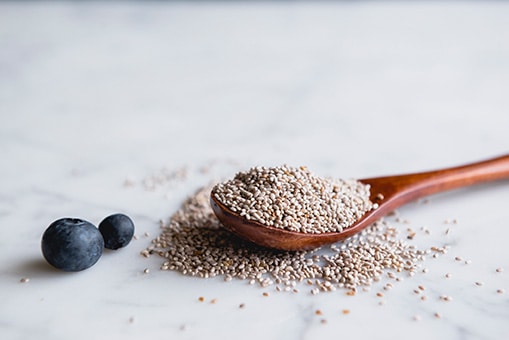 We’ve all heard that breakfast is the most important meal of the day yet many of us are either not hungry immediately in the morning or don’t have the time to make a well-balanced, nutritious meal before heading off to work. In the same amount of time as it takes to make your morning coffee, you could whip up a delicious smoothie that will not only energize you, it will help you feel full longer so you’re not starving by lunch time.
Give your day the kick start it needs by enhancing your morning smoothie or oatmeal with these 6 powerful raw superfoods.
We’ve all heard that breakfast is the most important meal of the day yet many of us are either not hungry immediately in the morning or don’t have the time to make a well-balanced, nutritious meal before heading off to work. In the same amount of time as it takes to make your morning coffee, you could whip up a delicious smoothie that will not only energize you, it will help you feel full longer so you’re not starving by lunch time.
Give your day the kick start it needs by enhancing your morning smoothie or oatmeal with these 6 powerful raw superfoods.
Goji Berries
- Good source of vitamin C and beta-carotene
- Low in calories, fat-free and loaded with fiber
- Good source of protein and iron
Chia Seeds
- Loaded with antioxidants
- Good source of fiber
- Supports weight loss by helping you feel full
- Rich with heart health omega-3 fatty acids
Cacao Nibs
- High in antioxidants
- Good source of fiber, magnesium, potassium and flavonoids
- Improves moods by boosting the “feel good” neurotransmitters
Hemp Seeds
- Significant source of protein
- Easily digestible compared to meat and other high protein foods
- Rich in vitamin E
- Delivers a continuous source of energy
Maca Powder
- Rich in vitamins B and C
- Good source of calcium, zinc, iron, magnesium, phosphorous and amino acids
- Known to increase energy and stamina
- Female hormone balancer
Flax Seeds
- Provides a higher ratio of omega-3 to omega-6 fatty acids
- Great source of fiber
- Supports brain function
- Contains lignans, which have antioxidant properties
















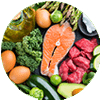

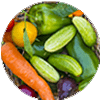
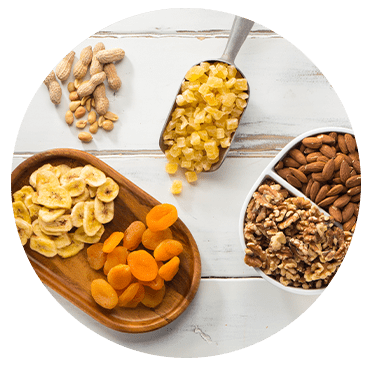
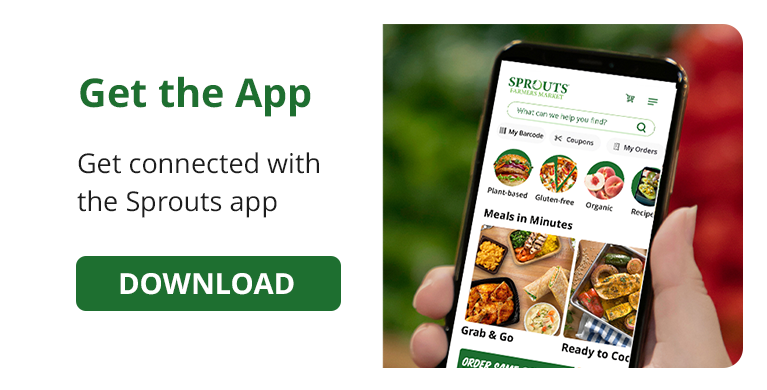




 Pinot Evil: Wicked Ways
Pinot Evil: Wicked Ways